




Related bibliographies:
Reptiles
Pacific Ocean






































































































































































































































































































































| |

Bibliography of the genus
Sphenodon (Tuatara)

(Reptilia: Sauria: Sphenodontidae)
Note:
In order to limit redundancy, relevant literature indexed in the related bibliographies in the left column may not have been included in this page. For a comprehensive search of literature, these bibliographies should therefore also be consulted.
Sphenodon punctatus
 |
Anonymous. 1980. The grand old man of New Zealand wildlife. Herptile 5(2): 8.
Anonymous. 1992. Betr.: 'Brückenechsen im Zoo-Aquarium Berlin' (Datz 6/91). DATZ (Die Aquarien- und Terrarien-Zeitschrift) 45(2): 131-132.
Anonymous. 2016. Chester Zoo in tuatara breeding first. Herptile 41(1): 36-39.
Aitken, N.; Hay, J.M.; Sarre, S.D.; Lambert, D.M.; Daugherty, C.H. 2001. Microsatellite DNA markers for tuatara (Sphenodon spp.). Conservation Genetics 2(2): 183-185.
Aldridge, R.D. 2015. Book review: Reproductive Biology and Phylogeny of Lizards and Tuatara. Copeia 103(3): 715-716.
Applegarth, J.S. 1983. Index to the genera of Reptilia - a device to assist curators. Testudinata, Crocodylia and Rhynchocephalia. Published by the author, Eugene, Oregon. 24 pp.
Australasian Reptile & Amphibian Specialist Group. 1996. Sphenodon punctatus. IUCN Red List of Threatened Species. Version 2014.3. www.iucnredlist.org (viewed 8 May 2015).
Australasian Reptile & Amphibian Specialist Group. 1996. Sphenodon guntheri. IUCN Red List of Threatened Species. Version 2014.3. www.iucnredlist.org (viewed 8 May 2015).
Barwick, R.E. 1982. Observations on active thermoregulation in the tuatara, Sphenodon punctatus (Reptilia: Rhynchocephalia). Occasional Publication New Zealand Department of Internal Affairs Wildlife Services 2: 225-236.
Baume, W. la 1910. Über die Brückenechse (Sphenodon punctatum Gray), insbesondere ihre Stellung im System. Aus d. Natur Leipzig 6: 490-499.
Bell, B.D.; Newman, D.G.; Daugherty, C.H. 1985. The ecological biogeography of the archaic New Zealand herpetofauna (Leiopelmatidae, Sphenodontidae). pp. 99-106. In: Grigg, G.; Shine, R. & Ehmann, H. (eds.). Biology of Australian frogs and reptiles. Surrey Beatty & Sons Pty & the Royal Zoological Society of New South Wales, Chipping Norton (NSW). 527 pp.
Besson, A.A.; Cree, A. 2010. A cold-adapted reptile becomes a more effective thermoregulator in a thermally challenging environment. Oecologia (Berlin) 163(3): 571-581.
Besson, A.A.; Cree, A. 2011. Integrating physiology into conservation: an approach to help guide translocations of a rare reptile in a warming environment. Animal Conservation 14(1): 28-37.
Besson, A.A.; Nelson, N.J.; Nottingham, C.M.; Cree, A. 2012. Is cool egg incubation temperature a limiting factor for the translocation of tuatara to southern New Zealand. New Zealand Journal of Ecology 36(1): 90-99.
Besson, A.A.; Thierry, A.; Boros, E.; Allen, K.; Bradley, S.; Norrie, C.; Cree, A. 2009. Evidence of food chemical discrimination in tuatara (O. Rhynchocephalia): comparison with a gekkotan lizard (O. Squamata). Journal of Herpetology 43(1): 124-131.
Blair, T.A.; Cree, A.; Skeaff, C.M.; Grimmond, N.M. 2000. Physiological effects of a fish oil supplement on captive juvenile tuatara (Sphenodon punctatus). Physiological and Biochemical Zoology 73(2): 177-191.
Blanchard, B. & The Tuatara Recovery Group, Department of Conservation. 2002. Tuatara captive management plan and husbandry manual. Threatened Species Occasional Publication 21: 1-75.
Blanchard, B. 1992. Management of the tuatara Sphenodon spp. in the wild and in captivity. International Zoo Yearbook 31: 42-44.
Blanchard, F.C. 1935. Tuatara. National Geographic Magazine 67(5): 649-662.
Bogert, C.M. 1953. Body temperatures of the tuatara under natural conditions. Zoologica (New York) 38: 63-64.
Bogert, C.M. 1953. The tuatara: why is it a lone survivor? Scientific Monthly (New York) 76(3): 163-170.
Boulenger, G.A. 1889. Catalogue of the chelonians, rhynchocephalians and crocodiles in the British Museum (Natural History), new edition. British Museum (Natural History), London. 311 pp.
Boulenger, G.A. 1966. Catalogue of the chelonians, rhynchocephalians and crocodiles in the British Museum (Natural History). Fascsimile Reprint. Wheldon & Wesley, Codicote, Herts. 311 pp.
Bredeweg, E.M.; Nelson, N.J. 2010. Natural history notes: Sphenodon punctatus (Tuatara). Frugivory. Herpetological Review 41(2): 211-212.
Byerly, T.C. 1925. Note on the partial regeneration of the caudal region of Sphenodon punctatum. Anatomical Record 30: 61-66.
Cancalosi, J. 1983. New Zealand's living dinosaur, the tuatara. Pacific Discovery 36(1): 10-15.
Carpenter, C.C. 1977. Variation and evolution of stereotyped behavior in reptiles. Part 1. A survey of stereotyped reptilian behavioral patterns. pp. 335-403. In: Gans, C. & Tinkle, D.W. (eds.). Biology of the Reptilia. Vol. 7. Ecology and behaviour A. Academic Press, London, New York & San Francisco. 720 pp.
Cartland, L.K.; Grimmond, N.M. 1994. The effect of temperature on the metabolism of juvenile tuatara, Sphenodon punctatus. New Zealand Journal of Zoology 21(4): 373-378.
Cassey, P.; Ussher, G.T. 1999. Estimating abundance of tuatara. Biological Conservation 88(3): 361-366.
Castanet, J.; Newman, D.G.; Saint Girons, H. 1988. Skeletochronological data on the growth, age, and population structure of the tuatara, Sphenodon punctatus, on Stephens and Lady Alice Islands, New Zealand. Herpetologica 44(1): 25-37.
Chorlton, R. 1977. Tuataras are living fossils. Forest Bird 204: 40-43.
Cole, N. 1999. The tuatara (Sphenodon) and the importance of taxonomic classification. Herptile 24(4): 171-175. (Incorrectly cited on front cover as 24(3)).
Conniff, R. 2016. Home off the range. Scientific American (October): 66-71.
Cooper, W.E.; Ferguson, G.W.; Habegger, J.J. 2001. Responses to animal and plant chemicals by several iguanian insectivores and the tuatara, Sphenodon punctatus. Journal of Herpetology 35(2): 255-263.
Corkery, I.; Bell, B.D.; Nelson, N.J. 2014. Behavioral thermoregulation of the tuatara, Sphenodon punctatus, under hydric and digestive constraints. Herpetological Conservation and Biology 9(1): 29-37.
Corkery, I.; Bell, B.D.; Nelson, N.J. 2015. Is the breeding behaviour of nesting seabirds influenced by the presence of a predatory reptile - the Tuatara. Journal of the Royal Society of New Zealand 45(1): 21-30.
Cree, A. 1994. Low annual reproductive output in female reptiles from New Zealand. New Zealand Journal of Zoology 21(4): 351-372.
Cree, A. 2014. Tuatara – Biology and conservation of a venerable survivor. Canterbury University Press, Canterbury. 583 pp.
Cree, A.; Cockrem, J.F.; Guillette, L.J. 1992. Reproductive cycles of male and female tuatara (Sphenodon punctatus) on Stephens Island, New Zealand. Journal of Zoology (London) 226(2): 199-217.
Cree, A.; Daugherty, C.H.; Hay, J.M. 1995. Reproduction of a rare New Zealand reptile, the tuatara Sphenodon punctatus, on rat-free and rat-inhabited islands. Conservation Biology 9(2): 373-383.
Cree, A.; Daugherty, C.H.; Schafer, S.F.; Brown, D. 1991. Nesting and clutch size of tuatara (Sphenodon guntheri) on North Brother Island, Cook Strait. Tuatara 31: 9-16.
Cree, A.; Daugherty, C.H.; Towns, D.R.; Blanchard, B. 1994. The contribution of captive management to the conservation of tuatara (Sphenodon) in New Zealand. pp. 377-385. In: Murphy, J.B.; Adler, K. & Collins, J.T. (eds.). Captive management and conservation of amphibians and reptiles. SSAR (Society for the Study of Amphibians and Reptiles). 408 pp. (Contributions to Herpetology no. 11).
Cree, A.; Thompson, M. 1988. Unravelling the mysteries of tuatara reproduction. Forest & Bird (Wellington) 19(4)(250): 14-16.
Crook, I.G. 1970. Tutara. Wildl. Wellington 1970: 16-19.
Crook, I.G. 1973. The tuatara, Sphenodon punctatus Gray, on islands with and without populations of the Polynesian rat, Rattus exulans (Peale). Proceedings N.Z. Ecol. Soc. 20: 115-120.
Crook, I.G. 1973. Tuatara and the Polynesian rat. Wildlife Review 4: 47-48.
Crook, I.G. 1974. Are tuataras dependent on petrels? Wildlife Review 5: 43-46.
Crook, I.G. 1975. Biogeography and ecology in New Zealand. The tuatara. Monographiae Biologicae 27: 331-352.
Curtis, N.; Jones, M.E.H.; Shi, J.; O'Higgins, P.; Evans, S.E.; Fagan, M.J. 2011. Functional relationship between skull form and feeding mechanics in Sphenodon, and implications for diapsid skull development. PLoS ONE 6(12): e29804, 1-11.
Cyrén, O. 1935. Den gamla bryggödlan i Uppsala. Fauna och Flora (Uppsala) 30(1): 10-16.
Daugherty, C.H.; Cree, A.; Hay, J.M.; Thompson, M.B. 1990. Neglected taxonomy and continuing extinctions of tuatara (Sphenodon). Nature (London) 347(6289): 177-179.
Daugherty, C.H.; Towns, D.R.; Cree, A.; Hay, J.M. 1992. The roles of legal protection versus intervention in conserving the New Zealand tuatara, Sphenodon. Developments in Landscape Management and Urban Planning 7: 247-259.
Dawbin, W.H. 1949. The tuatara. Tuatara 2: 91-96.
Dawbin, W.H. 1962. The tuatara in its natural habitat. Endeavour 21(81): 16-24.
Dawbin, W.H. 1962. The tuatara, New Zealand's ancient reptile. Australian Natural History 14: 32-34.
Dawbin, W.H. 1982. The tuatara Sphenodon punctatus, (Reptilia: Rhynchocephalia): a review. Occasional Publication New Zealand Department of Internal Affairs Wildlife Services 2: 149-181.
Dawbin, W.H. 1982. The tuatara Sphenodon punctatus: aspects of life history, growth and longevity. Occasional Publication New Zealand Department of Internal Affairs Wildlife Services 2: 237-250.
Dawbin, W.H.; Barwick, R.E. 1982. General discussion on the tuatara. Occasional Publication New Zealand Department of Internal Affairs Wildlife Services 2: 289-298.
Dendy, A. 1899. The hatching of tuatara eggs. Nature 59: 340.
Dendy, A. 1899. The life-history of the tuatara (Sphenodon punctatus). Transactions N. Zealand Inst. 31: 249-255.
Dollo, L. 1888. Sur le Proatlas. Zoologische Jahrbücher 3: 433-446.
Donne, T.E. 1942. On friendly terms with the tuatara. Natural History (New York) 50(2): 100-102.
Dowling, H.G. 1962. Tuatara (Sphenodon punctatus) at New York Zoo. International Zoo Yearbook 3 [1961]: 83-84.
Drewes, O. 2016. Tuataras. Die lebenden Fossilien Neuseelands Reptilia (D) 21(117): 56-63.
Dujsebayeva, T.N.; Ananjeva, N.B.; Iohanssen, L.K. 2004. Reduced state of skin sense organs in Sphenodon punctatus (Rhynchocephalia: Sphenodontidae) and its phylogenetical value. Russian Journal of Herpetology 11(2): 106-110.
Engel-Baiersdorf, E.C. von 1951. The tuatara. Mus. & Art Notes, Vancouver (2) 1(4): 18-20.
Farlow, J.O. 1975. Observations on a captive tuatara (Sphenodon punctatus). Journal of Herpetology 9(4): 353-355.
Fawcett, J.D.; Smith, H.M. 1970. An overlooked synonym of Sphenodon punctatus, the New Zealand tuatara. Journal of Herpetology 4: 89-91.
Feldman, A.; Sabath, N.; Pyron, R.A.; Mayrose, I.; Meiri, S. 2016. Body sizes and diversification rates of lizards, snakes, amphisbaenians and the tuatara. Global Ecology and Biogeography 25(2): 187-197.
Firth, B.T.; Thompson, M.B.; Kennaway, D.J.; Belan, I. 1989. Thermal sensitivity of reptilian melatonin rhythms: 'cold' tuatara vs. 'warm' skink. American Journal of Physiology 256(5): 1160-1163.
Flamme, A.C. la; Thierry, D. de; O'Neill, S.; Miller, H. 2010. Toll-like receptor responses in tuatara. New Zealand Journal of Zoology 37(3): 235-242.
Frair, W.; Behler, J.L. 1983. Book Reviews: Liste der Rezenten Amphibien un Reptilien. Testudines, Crocodylia, Rhynchocephalia by Wermuth and Mertens. Herpetological Review 14(1): 23-25.
Freeman, A.B.; Freeman, A.N.D. 1995. Rediscovery of an original type specimen of Sphenodon guntheri Buller in the Canterbury Museum, New Zealand. New Zealand Journal of Zoology 22(3): 357-359.
Gadow, H. 1898. Zur Rettung von Hatteria. Anatomischer Anzeiger 15: 41-43.
Gans, C. 1983. Is Sphenodon punctatus a maladapted relict? pp. 613-620. In: Rhodin, A.G.J. & Miyata, K. (eds.). Advances in herpetology and evolutionary biology. Essays in honor of Ernest E. Williams. Museum of Comparative Zoology, Cambridge, Massachusetts. 725 pp.
Gans, C.; Gillingham, J.C.; Clark, D.L. 1984. Courtship, mating and male combat in tuatara, Sphenodon punctatus. Journal of Herpetology 18(2): 194-197.
Gans, C.; Wever, E.G. 1976. Ear and hearing in Sphenodon punctatus. Proceedings of the National Academy of Sciences of the United States of America 73(11): 4244-4246.
Gartrell, B.D.; Jillings, E.; Adlington, B.A.; Mack, H.; Nelson, N.J. 2006. Health screening for a translocation of captive-reared tuatara (Sphenodon punctatus) to an island refuge. New Zealand Veterinary Journal 54(6): 344-349.
Gaston, A.J.; Scofield, P. 1995. Birds and tuatara on North Brother Island, Cook Strait, New Zealand. Notornis 42(1): 27-41.
Gaze, P. 2001. Tuatara recovery plan 2001-2011. Threatened Species Recovery Plan 47: 1-38.
Gaze, P. 2001. Tuatara recovery plan 2001-2011. (Threatened Species Recovery Plan 47). Department of Conservation, Wellington. 36 pp.
Gillingham, J.C.; Carmichael, C.; Miller, T. 1995. Social behavior of the tuatara, Sphenodon punctatus. Herpetological Monographs 9: 5-16.
Gillingham, J.C.; Miller, T.J. 1991. Reproductive ethology of the tuatara Sphenodon punctatus: applications in captive breeding. International Zoo Yearbook 30: 157-164.
Goellner, R. 1984. The tuatarium, an off-exhibit, climate-controlled chamber at the St. Louis Zoological Park. Acta Zoologica et Pathologica Antverpiensia 78: 319-324.
Goetz, B.G.R.; Thomas, B.W. 1994. Use of annual growth and activity patterns to assess management procedures for captive tuatara (Sphenodon punctatus). New Zealand Journal of Zoology 21(4): 473-485.
Gray, J.E. 1872. Catalogue of Shield reptiles in the Collection of the British Museum. Part 2. Emydosaurians, Rhynchocephalia, and Amphisbaenians. London. 41 pp.
Grayson, K.L.; Mitchell, N.J.; Monks, J.M.; Keall, S.N.; Wilson, J.N.; Nelson, N.J. 2014. Sex ratio bias and extinction risk in an isolated population of Tuatara (Sphenodon punctatus). PLoS ONE 9(4): e94214.
Groombridge, B. (ed.) 1982. The IUCN Amphibia-Reptilia red data book, part 1. Testudines, Crocodylia, Rhynchocephalia. IUCN, Gland, Switzerland. 426 pp.
Haas, G. 1973. Muscles of the jaws and associated structures in the Rhynchocephalia and Squamata. pp. 285-490. In: Gans, C. & Parsons, T.S. (eds.). Biology of the Reptilia. Vol. 4. Morphology D. Academic Press, London & New York. 528 pp.
Harrison, H.S. 1901. Hatteria punctata, its dentition and its incubation period. Anatomischer Anzeiger 20: 145-158.
Hartley, J. 1964. Tuataras. Report Jersey Wildlife Preservation Trust 1: 13-14.
Hartley, J. 1965. Notes on tuataras Sphenodon punctatus in captivity. International Zoo Yearbook 5: 170-171.
Hay, J.M.; Daugherty, C.H.; Cree, A.; Maxson, L.R. 2003. Low genetic divergence obscures phylogeny among populations of Sphenodon, remnant of an ancient reptile lineage. Molecular Phylogenetics and Evolution 29(1): 1-19.
Hay, J.M.; Sarre, S.D.; Lambert, D.M.; Allendorf, F.W.; Daugherty, C.H. 2010. Genetic diversity and taxonomy: a reassessment of species designation in tuatara (Sphenodon: Reptilia). Conservation Genetics 11(3): 1063-1081.
Hay, J.M.; Subramanian, S.; Millar, C.D.; Mohandesan, E.; Lambert, D.M. 2008. Rapid molecular evolution in a living fossil. Trends in Genetics 24(3): 106-109.
Heatwole, H. 1982. Panting and other responses to high temperature in the tuatara, Sphenodon punctatus. Occasional Publication New Zealand Department of Internal Affairs Wildlife Services 2: 251-269.
Herrel, A.; Moore, J.A.; Bredeweg, E.M.; Nelson, N.J. 2010. Sexual dimorphism, body size, bite force and male mating success in tuatara. Biological Journal of the Linnean Society 100(2): 287-292.
Herrel, A.; Schaerlaeken, V.; Moravec, J.; Ross, C.F. 2009. Sexual shape dimorphism in tuatara. Copeia 2009(4): 727-731.
Herrera-Flores, J.A.; Stubbs, T.L.; Benton, M.J. 2017. Macroevolutionary patterns in Rhynchocephalia: is the Tuatara (Sphenodon punctatus) a living fossil? Palaeontology (Oxford) 60(3): 319-328.
Hill, R.P. 1951. Last of an ancient race. Discovery 12(6): 181-183.
Hoare, J.M.; Pledger, S.; Keall, S.N.; Nelson, N.J.; Mitchell, N.J.; Daugherty, C.H. 2006. Conservation implications of a long-term decline in body condition of the Brothers Island tuatara (Sphenodon guntheri). Animal Conservation 9(4): 456-462.
Hoessle, C. 1969. Display of tuatara Sphenodon punctatus at St. Louis Zoological Park. International Zoo Yearbook 9: 32-33.
Holmes, B. 1995. Second chance for the tuatara. Britsh Herpetological Society Bulletin 54: 36.
Huey, R.B.; Janzen, F.J. 2008. Climate warming and environmental sex determination in tuatara: the Last of the Sphenodontians? Proceedings of the Royal Society Biological Sciences Series B 275(1648): 2181-2183.
International Commission on Zoological Nomenclature 1957. Opinion 455. Validation under the Plenary Powers (a) of the emendation to "Sphenodon" of the generic name "Sphaenodon" Gray (J. E.) 1831, and (b) of the family-group name "Sphenodontidae" Cope, 1870 (Class Reptilia). Opinions of the International Commission on Zoological Nomenclature 15(21): 379-392.
Ireland, L.C.; Gans, C. 1977. Optokinetic behavior of the tuatara, Sphenodon punctatus. Herpetologica 33(3): 339-344.
IUCN Australasian Reptile & Amphibian Specialist Group. 1996. Sphenodon guntheri. The IUCN Red List of Threatened Species 1996: e.T20612A9214663. http://dx.doi.org/10.2305/IUCN.UK.1996.RLTS.T20612A9214663.en.
IUCN Australasian Reptile & Amphibian Specialist Group. 1996. Sphenodon punctatus. The IUCN Red List of Threatened Species 1996: e.T20613A9214781. http://dx.doi.org/10.2305/IUCN.UK.1996.RLTS.T20613A9214781.en.
Jamieson, B.G.M.; Healy, J.M. 1992. The phylogenetic position of the tuatara, Sphenodon (Sphenodontida, Amniota), as indicated by cladistic analysis of the ultrastructure of spermatozoa. Philosophical Transactions of the Royal Society of London B Biological Sciences 335(1274): 207-219.
Jarvie, S.; Besson, A.A.; Seddon, P.J.; Cree, A. 2014. Assessing thermal suitability of translocation release sites for egg-laying reptiles with temperature-dependent sex determination: a case study with Tuatara. Animal Conservation 17(Supplement 1): 48-55.
Jarvie, S.; Mello, R.S.R.; Keall, S.; Cree, A. 2017. Natural history notes: Sphenodon punctatus (Tuatara). Pit-tag los. Herpetological Review 48(4): 840-841.
Jarvie, S.; Mello, R.S.R.; Keall, S.; Cree, A. 2018. Natural history notes: Erratum: Sphenodon punctatus (Tuatara). Pit-tag loss. (Herpetological Review 48(4): 840-841). Herpetological Review 49(3): 560.
Jarvie, S.; Ramirez, E.A.; Dolia, J.; Adolph, S.C.; Seddon, P.J.; Cree, A. 2014. Attaching radio transmitters does not affect mass, growth, or dispersal of translocated juvenile Tuatara (Sphenodon punctatus). Herpetological Review 45(3): 417-421.
Jasinski, A. 1980. [The tuatara Sphenodon punctatus]. (In Polish). Wszechswiat 1980(6): 133-137.
Jenkins, K.M.; Jones, M.E.H.; Zikmund, T.; Boyde, A.; Daza, J.D. 2017. A review of tooth implantation among Rhynchocephalians (Lepidosauria). Journal of Herpetology 51(3): 300–306
Jones, M.E.H. 2008. Skull shape and feeding strategy in Sphenodon and other Rhynchocephalia (Diapsida: Lepidosauria). Journal of Morphology 269(8): 945-966.
Jones, M.E.H.; Cree, A. 2012. Tuatara. Current Biology 22(23): R986-R987.
Keall, S.N.; Nelson, N.J.; Daugherty, C.H. 2010. Securing the future of threatened tuatara populations with artificial incubation. Herpetological Conservation and Biology 5(3): 555-562.
Keck, W.R. 1925. Some additional observations on Sphenodon punctatum in captivity. Proceedings of the Iowa Academy of Science 32: 429-430.
Keenan, R.D. 1932. The chromosomes of Sphenodon punctatum. Journal of Anatomy 67: 1-17.
King, F.W.; Burke, R.L. (eds.) 1989. Crocodilian, tuatara, and turtle species of the world. A taxonomic and geographic reference. Association of Systematics Collections, Washington, D.C. 216 pp.
Kitchin, J.; Barratt, B.I.P.; Jarvie, S.; Adolph, S.C.; Cree, A. 2017. Diet of tuatara (Sphenodon punctatus) translocated to Rokonui Ecosanctuary in southern New Zealand. New Zealand Journal of Zoology 44(3): 256-265
Krull, W. 1923. Observations on Sphenodon punctatum in captivity. Iowa Acad. Sci. 30: 151-155.
Lange, J. 1991. Brückenechsen im Zoo-Aquarium Berlin. DATZ (Die Aquarien- und Terrarien-Zeitschrift) 44(6): 366-368.
Lange, J. 1997. Die Haltung von Brückenechsen (Sphenodon punctatus) im Zoo-Aquarium Berlin. Zeitschrift des Kölner Zoo 40(2): 47-52.
Lange, J. 2000. Die Haltung von Brückenechsen im Zoo-Aquarium Berlin. Bongo 30: 25-32.
Lash, S.L.S. 1980. Conservation in New Zealand. Explorer 22(2): 14-18.
Lehrs, P. 1911. Die Tuatara. Bericht der Senckenbergischen Naturforschenden Gesellschaft (Frankfurt) 42: 261-268.
Linklater, W.L. 2011. Territorial tuatara? - a hypothesis still to be tested. New Zealand Journal of Ecology 35(3): 308-311.
Lutz, D. 2006. Tuatara, a living fossil: from before dinosaurs. Dimi Press, Salem. 108 pp.
MacAvoy, E.S.; McGibbon, L.M.; Sainsbury, J.P.; Lawrence, H.; Wilson, C.A.; Daugherty, C.H.; Chambers, G.K. 2007. Genetic variation in island populations of tuatara (Sphenodon spp) inferred from microsatellite markers. Conservation Genetics 8(2): 305-318.
Markwell, T.J. 1997. Video camera count of burrow-dwelling fairy prions, sooty shearwaters, and tuatara on Takapourewa (Stephens Island), New Zealand. New Zealand Journal of Zoology 24(3): 231-237.
Markwell, T.J. 1998. Relationship between tuatara Sphenodon punctatus and fairy prion Pachyptila turtur densities in different habitats on Takapourewa (Stephens Island), Cook Strait, New Zealand. Marine Ornithology 26(1-2): 81-83.
McCallum, J. 1983. Reptiles of the Hauraki Gulf, New Zealand. Herpetofauna (Sydney) 14(1-2): 35-41.
McDonald, H.S.; Heath, J.E. 1971. Electrocardiographic observations on the tuatara, Sphenodon punctatus. Comparative Biochemistry and Physiology (A) 40: 881-892.
McIntyre, M. 1997. Conservation of the tuatara. Victoria University Press, Wellington. 24 pp.
McIntyre, M.E. 1991. The 'elephant weta'. Australian Natural History 23(8): 602.
Mello, R.S.R.; Besson, A.A.; Hare, K.M.; Fay, V.; Smith, E.; Cree, A. 2013. Adjustment of juvenile tuatara to a cooler, southern climate: operative temperatures, emergence behaviour and growth rate. New Zealand Journal of Zoology 40(4): 290-303.
Mertens, R. 1955. Proposed use of the plenary powers for the purpose (a) of validating the currently accepted emendation "Sphenodon" of the generic name "Sphaenodon" Gray (J. E.), 1831 and (b) of validating the family-group name "Sphenodontidae". Bulletin of Zoological Nomenclature 11: 139-141.
Mertens, R. 1958. Eine lebende Tuatara oder Brückenechse. Natur und Volk 88: 15-21.
Mertens, R. 1964. [Sphenodon punctatus. Waarnemingen bij tuataras in het terrarium]. (In Dutch). Lacerta 22: 59-63.
Mertens, R. 1965. Beobachtungen an Tuataras (Sphenodon punctatus) im Terrarium. Freunde Kölner Zoo 4(8): 127-130.
Mertens, R. 1971. Bemerkungen über die Häutung der Brückenechse (Sphenodon punctatus) in Gefangenschaft. Salamandra 7: 81-82.
Mertens, R.; Wermuth, H. 1955. Die rezenten Schildkröten, Krokodile und Brückenechsen. Zoologische Jahrbücher Abteilung für Allgemeine Systematik, Ökologie und Geographie der Tiere. Gustav Fischer Verlag, Jena. 83(5): 323-440.
Meyer, R.V.B. 1988. Behaviour of young tuatara (Sphenodon punctatus) in total darkness. Tuatara 30: 36-38.
Meyer, R.V.B. 1993. Ein Reptil mit uraltem Stammbaum: die neuseeländische Brückenechse. Natur und Museum (Frankfurt am Main) 123(3): 89-94.
Meyer, R.V.B.; Teh, K.L. 1991. Visual predation by tuatara (Sphenodon punctatus) on the beach beetle (Chaerodes trachyscelides) as a selective force in the production of distinct colour morphs. Tuatara 31: 1-8.
Miller, H.C.; Allendorf, F.; Daugherty, C.H. 2010. Genetic diversity and differentiation at MHC genes in island populations of tuatara (Sphenodon spp.). Molecular Ecology 19(18): 3894-3908.
Miller, H.C.; Miller, K.A.; Daugherty, C.H. 2008. Reduced MHC variation in a threatened tuatara species. Animal Conservation 11(3): 206-214.
Miller, H.C.; Moore, J.A.; Allendorf, F.W.; Daugherty, C.H. 2009. The evolutionary rate of tuatara revisited. Trends in Genetics 25(1): 13-15.
Miller, K.A.; Gruber, M.A.M.; Keall, S.N.; Blanchard, B.; Nelson, N.J. 2010. Changing taxonomy and the need for supplementation in the management of re-introductions of Brothers Island tuatara in Cook Strait, New Zealand. pp. 93-97. In: Soorae, P.S. (ed.). Global re-introduction perspectives: 2010. Additional case-studies from around the globe. IUCN/SSC Re-introduction Specialist Group, Abu Dhabi. 352 pp.
Miller, K.A.; Miller, H.C.; Moore, J.A.; Mitchell, N.J.; Cree, A.; Allendorf, F.W.; Sarre, S.D.; Keall, S.N.; Nelson, N.J. 2012. Securing the demographic and genetic future of Tuatara through assisted colonization. Conservation Biology 26(5): 790-798.
Mitchell, N.J.; Allendorf, F.W.; Keall, S.N.; Daugherty, C.H.; Nelson, N.J. 2010. Demographic effects of temperature-dependent sex determination: will tuatara survive global warming? Global Change Biology 16(1): 60-72.
Mitchell, N.J.; Kearney, M.R.; Nelson, N.J.; Porter, W.P. 2008. Predicting the fate of a living fossil: how will global warming affect sex determination and hatching phenology in tuatara? Proceedings of the Royal Society Biological Sciences Series B 275(1648): 2185-2193.
Mitchell, N.J.; Nelson, N.J.; Cree, A.; Pledger, S.; Keall, S.N.; Daugherty, C.H. 2006. Support for a rare pattern of temperature-dependent sex determination in archaic reptiles: evidence from two species of tuatara (Sphenodon). Frontiers in Zoology 3(9): 1-12.
Moffat, L.A. 1985. Embryonic development and aspects of reproductive biology in the tuatara, Sphenodon punctatus. pp. 493-521. In: Gans, C.; Billett, F.; Maderson, P. (eds.). Biology of the Reptilia. Vol. 14. Development A. Wiley & Sons, New York. 778 pp.
Moller, H. 1985. Tree wetas (Hemideina crassicruris) (Orthoptera: Stenopelmatidae) of Stephens Island, Cook Strait. New Zealand Journal of Zoology 12(1): 55-69.
Moore, J.A.; Daugherty, C.H.; Godfrey, S.S.; Nelson, N.J. 2009. Seasonal monogamy and multiple paternity in a wild population of a territorial reptile (tuatara). Biological Journal of the Linnean Society 98(1): 161-170.
Moore, J.A.; Daugherty, C.H.; Nelson, N.J. 2009. Large male advantage: phenotypic and genetic correlates of territoriality in Tuatara. Journal of Herpetology 43(4): 570-578.
Moore, J.A.; Goodfrey, S.S. 2006. Natural history notes: Sphenodon punctatus (Common Tuatara). Opportunistic predation. Herpetological Review 37(1): 81-82.
Moore, J.A.; Grant, T.; Brown, D.; Keall, S.N.; Nelson, N.J. 2010. Mark-recapture accurately estimates census for Tuatara, a burrowing reptile. Journal of Wildlife Management 74(4): 897-901.
Moore, J.A.; Hoare, J.M.; Daugherty, C.H.; Nelson, N.J. 2007. Waiting reveals waning weight: monitoring over 54 years shows a decline in body condition of a long-lived reptile (tuatara, Sphenodon punctatus). Biological Conservation 135(2): 181-188.
Moore, J.A.; Miller, H.C.; Daugherty, C.H.; Nelson, N.J. 2008. Fine-scale genetic structure of a long-lived reptile reflects recent habitat modification. Molecular Ecology 17(21): 4630-4641.
Moore, J.A.; Nelson, N.J.; Keall, S.N.; Daugherty, C.H. 2008. Implications of social dominance and multiple paternity for the genetic diversity of a captive-bred reptile population (tuatara). Conservation Genetics 9(5): 1243-1251.
Mulder, C.P.H.; Keall, S.N.; Niinimaa, A.; Laine, K. 2001. Burrowing seabirds and reptiles: impacts on seeds, seedlings and soils in an island forest in New Zealand. Oecologia (Berlin) 127(3): 350-360.
Nelson, N.; Keall, S.; Gaze, P.; Daugherty, C. 2008. Re-introduction of tuatara as part of an ecological restoration project on Wakatere-papanui Island, Marlborough Sounds, New Zealand. pp. 58-61. In: Soorae, P.S. (ed.). Global re-introduction perspectives: re-introduction case-studies from around the globe. IUCN/SSC Re-introduction Specialist Group, Abu Dhabi. 284 pp.
Nelson, N.; Thompson, M.B.; Pledger, S.; Keall, S.N.; Daugherty, C.H. 2005. Do TSD, sex ratios, and nest characteristics influence the vulnerability of tuatara to global warming? pp. 250-257. In: Morris, S.; Vosloo, A. (eds.). Animals and environments: proceedings of the Third International Conference of Comparative Physiology and Biochemistry held in KwaZulu-Natal, South Africa between 7 and 13 August 2004. [International Congress Series 1275]. Elsevier, Amsterdam, San Diego, etc. 379 pp.
Nelson, N.J.; Cree, A.; Thompson, M.B.; Keall, S.N.; Daugherty, C.H. 2004. Temperature-dependent sex determination in tuatara. pp. 53-58. In: Valenzuela, N.; Lance, V. (eds.). Temperature-dependent sex determination in vertebrates. Smithsonian Books, Washington, D.C. 194 pp.
Nelson, N.J.; Keall, S.N.; Brown, D.; Daugherty, C.H. 2002. Establishing a new wild population of tuatara (Sphenodon guntheri). Conservation Biology 16(4): 887-894.
Nelson, N.J.; Keall, S.N.; Pledger, S.; Daugherty, C.H. 2002. Male-biased sex ratio in a small tuatara population. Journal of Biogeography 29(5-6): 633-640.
Nelson, N.J.; Moore, J.A.; Pillai, S.; Keall, S.N. 2010. Thermosensitive period for sex determination in the Tuatara. Herpetological Conservation and Biology 5(2): 324-329.
Nelson, N.J.; Thompson, M.B.; Pledger, S.; Keall, S.N.; Daugherty, C.H. 2004. Egg mass determines hatchling size, and incubation temperature influences post-hatching growth, of tuatara Sphenodon punctatus. Journal of Zoology (London) 263(1): 77-87.
Nelson, N.J.; Thompson, M.B.; Pledger, S.; Keall, S.N.; Daugherty, C.H. 2004. Induction of oviposition produced smaller eggs in tuatara (Sphenodon punctatus). New Zealand Journal of Zoology 31(4): 283-289.
Nelson, N.J.; Thompson, M.B.; Pledger, S.; Keall, S.N.; Daugherty, C.H. 2006. Performance of juvenile tuatara depends on age, clutch, and incubation regime. Journal of Herpetology 40(3): 399-403.
Newhook, F.J. 1969. Coppermine island and conservation. Biological Conservation 1: 313-317.
Newman, D. 1987. Tuatara. John McIndoe Ltd & New Zealand Department of Conservation, Dunedin. 24 pp.
Newman, D.G. 1978. Tuataras and petrels. Wildlife Review 9: 16-23.
Newman, D.G. 1982. Breeding tuataras, Sphenodon punctatus, in captivity. Occasional Publication New Zealand Department of Internal Affairs Wildlife Services 2: 277-288.
Newman, D.G. 1982. Current distribution of the tuatara. Occasional Publication New Zealand Department of Internal Affairs Wildlife Services 2: 145-147.
Newman, D.G. 1982. Tuatara, Sphenodon punctatus, and burrows, Stephens Island. Occasional Publication New Zealand Department of Internal Affairs Wildlife Services 2: 213-223.
Newman, D.G. 1983. New Zealand herpetological research - the work of the NZ wildlife service. Herpetofauna (Sydney) 14(1-2): 42-51.
Newman, D.G. 1987. Burrow use and population densities of tuatara (Sphenodon punctatus) and how they are influenced by fairy prions (Pachyptila turtur) on Stephens Island, New Zealand. Herpetologica 43(3): 336-344.
Newman, D.G. 1988. Evidence of predation on a young tuatara, Sphenodon punctatus, by kiore, Rattus exulans, on Lady Alice Island. New Zealand Journal of Zoology 15(3): 443-446.
Newman, D.G.; Crook, I.G.; Moran, L.R. 1979. Some recommendations on the captive maintenance of tuataras Sphenodon punctatus based on observations in the field. International Zoo Yearbook 19: 68-74.
Newman, D.G.; McFadden, I. 1990. Seasonal fluctuations of numbers, breeding and food of kiore (Rattus exulans) on Lady Alice Island (Hen and Chickens group), with a consideration of Kiore: tuatara (Sphenodon punctatus) relationships in New Zealand. New Zealand Journal of Zoology 17(1): 55-63.
Newman, D.G.; McFadden, I. 1990. Status of the tuatara, Sphenodon punctatus, on Hongiora and Ruamahua-iti Islands, Aldermen Group, New Zealand. New Zealand Journal of Zoology 17(1): 153-156.
Newman, D.G.; Watson, P.R.; McFadden, I. 1994. Egg production by tuatara on Lady Alice and Stephens Island, New Zealand. New Zealand Journal of Zoology 21(4): 387-398.
Newmann, D.G. 1983. Tuatara/Kiore relationships. Wildlife Review 12: 60-63.
Nielsen, E. 1957. To sjældne gæster i Danmark [Two rare visitors in Denmark]. (In Danish). Naturens Verden (Copenhagen) 1957 (January): 22-24.
Norris, T.B.; Rickards, G.K.; Daugherty, C.H. 2004. Chromosomes of tuatara, Sphenodon, chromosome heteromorphism and an archaic reptilian karyotype. Cytogenetic and Genome Research 105(1): 93-99.
Northcutt, R.G.; Heath, J.E. 1973. T-maze behavior of the tuatara (Sphenodon punctatus). Copeia 1973(3): 617-620.
Obst, F.J. 1966. Eine Brückenechse in Kraków. Aquarien Terrarien 13: 20.
Oliver, J.A. 1953. The timeless tuatara. Animal Kingdom 56: 2-8, 31.
O'Meally, D.; Miller, H.; Patel, H.R.; Graves, J.A.M.; Ezaz, T. 2009. The first cytogenetic map of the Tuatara, Sphenodon punctatus. Cytogenetic and Genome Research 127(2-4): 213-223.
Osawa, G. 1899. Erwiederung an Gadow auf den Aufsatz "Zur Rettung von Hatteria". Anatomischer Anzeiger 15: 289-291.
Osawa, O. 1898. Über die Stellung der Hatteria punctata in der Tierreihe. Verh. Anat. Ges. 12: 100-105.
Packard, M.J.; Thompson, M.B.; Goldie, K.N.; Vos, M. 1988. Aspects of shell formation in eggs of the tuatara, Sphenodon punctatus. Journal of Morphology 197(2): 147-157.
Parkinson, B.J. 2000. The Tuatara. Reed, Auckland, N.Z. 32 pp.
Parrish, R. 2005. Pacific rat Rattus exulans eradication by poison-baiting from the Chickens Islands, New Zealand. Conservation Evidence 2: 89-90.
Pepperell, J.G. 1982. Tuatara Sphenodon punctatus locomotion: a summary. Occasional Publication New Zealand Department of Internal Affairs Wildlife Services 2: 207-211.
Peters, W.C.H. 1870. Ein Exemplar von Sphenodon punctatus Gray. Sitzungsberichte der Gesellschaft naturforschender Freunde zu Berlin 1870(October): 54.
Pierce, R.J. 2002. Kiore (Rattus exulans) impact on breeding success of Pycroft's petrels and little shearwaters. DOC Science Internal Series 39: 1-24.
Platel, R.; Timmel, J. 1988. L'encephalisation chez le tuatara de Nouvelle-Zelande: Sphenodon punctatus Gray (Lepidosauria, Sphenodontidae). Bulletin de la Societe Herpetologique de France 45: 17-26.
Price, S.; Grayson, K.; Ward-Smith, T.; Nelson, N. 2016. Re-introduction of Tuatara to a mainland sanctuary within the species historic range in Hawkes Bay, New Zealand. pp. 67-71. IUCN/SSC Re-Introduction Specialist Group & Environmental Agency, Abu Dhabi.
Ramstad, K.M.; Moore, J.A.; Refsnider, J.M. 2012. Intrasexual aggression in Tuatara: males and females respond differently to same-sex intruders. Herpetological Review 43(1): 19-21.
Ramstad, K.M.; Nelson, N.J.; Paine, G.; Beech, D.; Paul, A.; Paul, P.; Allendorf, F.W.; Daugherty, C.H. 2007. Species and cultural conservation in New Zealand: Maori traditional ecological knowledge of Tuatara. Conservation Biology 21(2): 455-464.
Refsnider, J.; Moore, J.; Streby, H. 2008. Natural history notes: Sphenodon punctatus (Common Tuatara). Prey detection. Herpetological Review 39(3): 347-348.
Refsnider, J.M.; Daugherty, C.H.; Godfrey, S.S.; Keall, S.N.; Moore, J.A.; Nelson, N.J. 2013. Patterns of nesting migrations in the Tuatara (Sphenodon punctatus), a colonially nesting island reptile. Herpetologica 69(3): 282-290.
Refsnider, J.M.; Daugherty, C.H.; Keall, S.N.; Nelson, N.J. 2010. Nest-site choice and fidelity in tuatara on Stephens Island, New Zealand. Journal of Zoology (London) 280(4): 396-402.
Refsnider, J.M.; Keall, S.N.; Daugherty, C.H.; Nelson, N.J. 2009. Does nest-guarding in female tuatara (Sphenodon punctatus) reduce nest destruction by conspecific females? Journal of Herpetology 43(2): 294-299.
Reilly, S.M.; McElroy, E.J.; Odum, R.A.; Hornyak, V.A. 2006. Tuataras and salamanders show that walking and running mechanics are ancient features of tetrapod locomotion. Proceedings of the Royal Society Biological Sciences Series B 273(1593): 1563-1568.
Rheubert, J.L.; Cree, A.; Downes, M.; Sever, D.M. 2013. Reproductive morphology of the male Tuatara, Sphenodon punctatus. Acta Zoologica (Copenhagen) 94(4): 454-461.
Rheubert, J.L.; Siegel, D.S.; Trauth, S.E. (eds.). 2015. Reproductive Biology and Phylogeny of Lizards and Tuatara. CRC Press, Boca Raton, Florida. 748 pp.
Robb, J. 1977. The tuatara. Patterns Prog. (Zool. Ser.) 6: 1-64.
Robinson, P.L. 1976. How Sphenodon and Uromastyx grow their teeth and use them. Linnean Society Symposium Series 3: 43-64.
Rogner, M. 1994. Echsen 2. Haltung, Pflege und Zucht im Terrarium. Warane, Skinke und andere Echsen sowie Brückenechsen und Krokodile. Eugen Ulmer, Stuttgart. 270 pp.
Rogner, M. 1997. Lizards. Vol. 2. Monitors, skinks and other lizards including tuataras and crocodilians. Krieger, Malabar, Florida. 317 pp. (Translation of German 1994 original).
Rout, T.M.; McDonald-Madden, E.; Martin, T.G.; Mitchell, N.J.; Possingham, H.P.; Armstrong, D.P. 2013. How to decide whether to move species threatened by climate change. PLoS ONE 8(10): e75814, 1-7.
Saint Girons, H. 1980. Thermoregulation in reptiles with special reference to the tuatara and its ecophysiology. Tuatara 24(2): 59-80.
Saint Girons, H. 1984. Le Sphenodon, particularites ecologiques et hypotheses sur son evolution. Bulletin de la Societe Zoologique de France 108(4): 631-634.
Saint Girons, H. 1985. The Sphenodon: ecological features and some hypotheses concerning its evolution. Bulletin of the Chicago Herpetological Society 20(2): 48-51. (Translation from Bulletin Soc. Zool. Fri. 108(4) 1983).
Saint Girons, H.; Bell, B.D.; Newman, D.G. 1980. Observations on the activity and thermoregulation of the tuatara, Sphenodon punctatus (Reptilia: Rhynchocephalia), on Stephens Island. New Zealand Journal of Zoology 7(4): 551-556.
Saint Girons, H.; Newman, D.G. 1987. The reproductive cycle of the male kuatara, Sphenodon punctatus, on Stephens Island, New Zealand. New Zealand Journal of Zoology 14(2): 231-237.
Saint Girons, M.C. 1985. Les tuataras (Sphenodon punctatus), predateurs de petrels (Pachyptila turtur) a Stephens Island (Nouvelle Zelande). Alauda 53(2): 148-150.
Saunders, A. 1996. Species recovery planning: some New Zealand case studies. pp. 83-86. In: Stephens, S. & Maxwell, S. (eds.). Back from the brink: refining the threatened species recovery process. Surrey Beatty & Sons, Chipping Norton. 210 pp.
Schauinsland, H. 1898. Beiträge zur Biologie der Hatteria. Sitzungsberichte der Akademie der Wissenschaften in Berlin 1898: 701-704.
Schauinsland, H. 1899. Beiträge zur Biologie und Entwickclung der Hatteria nebst Bemerkungen über die Entwickelung der Sauropsiden. Anatomischer Anzeiger 15: 309-334.
Schmid, K.L.; Howland, H.C.; Howland, M. 1992. Focusing and accommodation in tuatara (Sphenodon punctatus). Journal of Comparative Physiology A Sensory Neural and Behavioral Physiology 170(3): 263-266.
Schmidt, K.P. 1952. References to the tuatara in the Stephen Island letter book. Fieldiana Zoology 34: 1-10.
Schmidt, K.P. 1953. A visit to Karewa Island home of the tuatara. Fieldiana Zoology 34: 153-164.
Schuele, A. 2009. Tuatara - ein "lebendes Fossil" in Berlin. Bongo 39: 27-34.
Seligmann, H.; Beiles, A.; Werner, Y.L. 2003. More injuries in left-footed individual lizards and Sphenodon. Journal of Zoology (London) 260(2): 129-144.
Seligmann, H.; Moravec, J.; Werner, Y.L. 2008. Morphological, functional and evolutionary aspects of tail autotomy and regeneration in the 'living fossil' Sphenodon (Reptilia: Rhynchocephalia). Biological Journal of the Linnean Society 93(4): 721-743.
Shanahan, S. 1968. The tuatara. Herpetology 2(3): 31.
Stebbins, R.C. 1958. An experimental study of the "third eye" of the tuatara. Copeia 1958: 183-190.
Stemmler-Morath, C. 1958. Einige Beobachtungen an der Brückenechse. DATZ (Die Aquarien- und Terrarien-Zeitschrift) 11: 151-152.
Stivens, D. 1966. Survivor from the age of reptiles. The tuatara. Animal Kingdom 69: 154-156.
Subramanian, S.; Hay, J.M.; Mohandesan, E.; Millar, C.D.; Lambert, D.M. 2009. Molecular and morphological evolution in tuatara are decoupled. Trends in Genetics 25(1): 16-18.
Taylor, G.A. 1991. Flora and fauna of Plate (Montunau) Island, Bay of Plenty. Tane 33: 113-120.
Tennyson, A.; Pierce, R. 1995. The presence of Pycroft's petrel (Pterodroma pycrofti) and other petrels on Mauitaha Island, New Zealand. Notornis 42(3): 212-214.
Terezow, M.G.; Nelson, N.J.; Markwell, T.J. 2008. Circadian emergence and movement of captive juvenile tuatara (Sphenodon spp.). New Zealand Journal of Zoology 35(3): 205-216.
Thalia, E.K.; East, M.R.; Daugherty, C.H. 1995. Ecological restoration and habitat relationships of reptiles on Stephens Island, New Zealand. New Zealand Journal of Zoology 22(3): 249-261.
Thilenius, G. 1899. Vorläufiger Bericht über die Eiablage und erste Entwickelung der Hatteria punctata. Sitzungsberichte der Akademie der Wissenschaften in Berlin 14: 247-266.
Thompson, M.B. 1990. Incubation of eggs of tuatara, Sphenodon punctatus. Journal of Zoology (London) 222(2): 303-318.
Thompson, M.B. 2015. Book review: Tuatara. Biology and Conservation of a Venerable Survivor. Copeia 103(3): 716-717.
Thompson, M.B.; Daugherty, C.H. 1998. Metabolism of tuatara, Sphenodon punctatus. Comparative Biochemistry and Physiology A Molecular & Integrative Physiology 119(2): 519-522.
Thompson, M.B.; Daugherty, C.H.; Cree, A.; French, D.C.; Gillingham, J.C.; Barwick, R.E. 1992. Status and longevity of the tuatara, Sphenodon guntheri, and Duvaucel's gecko, Hoplodactylus duvaucelii on North Brother Island, New Zealand. Journal of the Royal Society of New Zealand 22(2): 123-130.
Thompson, M.B.; Newman, D.G.; Watson, P.R. 1998. Influence of X-rays on incubation in tuatara, Sphenodon punctatus. New Zealand Journal of Zoology 25(3): 295-300.
Thompson, M.B.; Packard, G.C.; Packard, M.J.; Rose, B. 1996. Analysis of the nest environment of tuatara Sphenodon punctatus. Journal of Zoology (London) 238(2): 239-251.
Thoresen, A.C. 1976. The resting place of the winds. Oceans 9(3): 42-47.
Tintinger, V. 1987. Breeding the tuatara Sphenodon punctatus at Auckland Zoo. International Zoo Yearbook 26: 183-186.
Towns, D. 2005. Eradication of introduced mammals and reintroduction the tuatara Sphenodon punctatus to Motuhora/Whale Island, New Zealand. Conservation Evidence 2: 106-107.
Towns, D.R.; Miller, K.A.; Nelson, N.J.; Chapple, D.G. 2016. Can translocations to islands reduce extinction risk for reptiles? Case studies from New Zealand. Biological Conservation 204(A): 120-127.
Towns, D.R.; Parrish, G.R.; Tyrrell, C.; Ussher, G.T.; Cree, A.; Newman, D.G.; Whitaker, A.H.; Westbrooke, I. 2007. Responses of tuatara (Sphenodon punctatus) to removal of introduced Pacific rats from islands. Conservation Biology 21(4): 1021-1031.
Turner, F.B. 1977. The dynamics of populations of squamates, crocodilians and rhynchocephalians. pp. 157-264. In: Gans, C. & Tinkle, D.W. (eds.). Biology of the Reptilia. Vol. 7. Ecology and behaviour A. Academic Press, London, New York & San Francisco. 720 pp.
Tyrrell, C. 2001. Natural history notes: Sphenodon punctatus punctatus (Northern Tuatara). Reproduction. Herpetological Review 32(1): 39-40.
Tyrrell, C.; Cree, A.; Towns, D.R. 2000. Variation in reproduction and condition of Northern Tuatara (Sphenodon punctatus punctatus) in the presence and absence of kiore. Science for Conservation (Wellington) 153: 1-42.
Tyrrell, C.L.; Cree, A. 1998. Relationships between corticosterone concentration and season, time of day and confinement in a wild reptile (tuatara, Sphenodon punctatus). General and Comparative Endocrinology 110(2): 97-108.
Ussher, G.T. 1999. Method for attaching radio transmitters to medium-sized reptiles: trials on tuatara (Sphenodon punctatus). Herpetological Review 30(3): 151-153.
Ussher, G.T. 1999. Tuatara (Sphenodon punctatus) feeding ecology in the presence of kiore (Rattus exulans). New Zealand Journal of Zoology 26(2): 117-125.
Vermunt, A.; Hare, K.M.; Besson, A.A. 2014. Unusual change in activity pattern at cool temperature in a reptile (Sphenodon punctatus). Journal of Thermal Biology 42: 40-45.
Waddick, J.W. 1973. Vanishing species. The tuatara Sphenodon punctatus. Animal Kingdom 76(5): 33.
Walls, G.Y. 1978. The influence of the tuatara on fairy prion breeding on Stephens Island, Cook Strait. New Zealand Journal of Ecology 1: 91-98.
Walls, G.Y. 1981. Feeding ecology of the tuatara (Sphenodon punctatus) on Stephens Island, Cook Strait. New Zealand Journal of Ecology 4: 89-97.
Walls, G.Y. 1982. Provisional results from a study of the feeding ecology of the tuatara (Sphenodon punctatus) on Stephens Island. Occasional Publication New Zealand Department of Internal Affairs Wildlife Services 2: 271-276.
Walls, G.Y. 1983. Activity of the tuatara and its relationships to weather conditions on Stephens Island, Cook Strait, with observations on geckos and invertebrates. New Zealand Journal of Zoology 10(3): 309-317.
Wells, R.M.G.; Tetens, V.; Housley, G.D.; Young, A.A.; Dawson, N.J.; Johansen, K. 1990. Effect of temperature on control of breathing in the cryophilic rhynchocephalian reptile, Sphenodon punctatus. Comparative Biochemistry and Physiology A Comparative Physiology 96(2): 333-340.
Wermuth, H. 1956. Brückenechsen. Aquarien und Terrarien (Leipzig) 3: 56-59.
Wermuth, H.; Mertens, R. 1961. Schildkröten, Krokodile, Brückenechsen. Gustav Fischer Verlag, Jena. 422 pp.
Wermuth, H.; Mertens, R. 1977. Liste der rezenten Amphibien und Reptilien. Testudines, Crocodylia, Rhynchocephalia. Das Tierreich 100: 1-174.
Werner, F. 1893. Beobachtungen an Sphenodon (Hatteria) punctatus. Zoologischer Garten 34: 335-339.
Werner, Y.L.; Whitaker, A.H. 1978. Observations and comments on the body temperatures of some New Zealand reptiles. New Zealand Journal of Zoology 5(2): 375-393.
Wettstein, O. von 1931. Rhyncocephalia. Kukenthal & Krumbach's Handbuch der Zoologie 7(1): 128 pp.
Wettstein, O. von 1932. Rhynchocephalia [concluded]. Kukenthal & Krumbach. Handbuch Der Zoologie 7: 129-224.
Wettstein, O. von 1948. Sphenodon punctatus reischeki nov. subsp. Zoologischer Anzeiger 148(1/2): 45-47.
Whitaker, A.H. 1978. The effects of rodents on reptiles and amphibians. New Zealand Department of Lands and Survey Information Series 4: 75-88.
Wilkinson, M.; Benton, M.J. 1995. Missing data and rhynchosaur phylogeny. Historical Biology 10(2): 137-150.
Wilkinson, M.; Benton, M.J. 1996. Sphenodontid phylogeny and the problem of multiple trees. Royal Society Philosophical Transactions Biological Sciences 351(1335): 1-16.
Wojtusiak, R.J. 1973. Some ethological and biological observations on the tuatara in laboratory conditions. Tuatara 20(2): 97-109.
Wojtusiak, R.J.; Majlert, Z. 1973. Bioacoustics of the voice of the tuatara, Sphenodon punctatus punctatus. New Zealand Journal of Science 16(2): 305-313.
Wood, D. 1967. Breeding tuataras Sphenodon punctatus at Auckland Zoo. International Zoo Yearbook 7: 178-179.
Woodland, W.N.F. 1920. Some observations on caudal autotomy and regeneration in the gecko (Hemidactylus flavivividis Rüppell), with notes on the tails of Sphenodon and Pygopus. Quarterly J. Microsc. Sci. London 65: 63-100.
Wu, N.C.; Waas, J.R. 2017. No evidence for across-population scent discrimination of cloacal gland secretions in Tuatara (Sphenodon punctatus). Journal of Herpetology 51(2): 178–185.
Wu, X. 2003. Functional morphology of the temporal region in the Rhynchocephalia. Canadian Journal of Earth Sciences 40(4): 589-607.
|
| | 


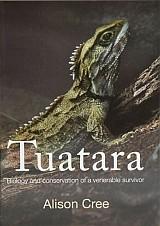

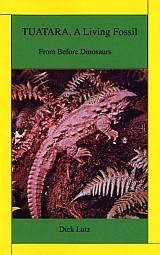

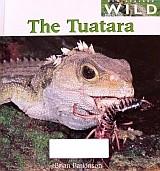

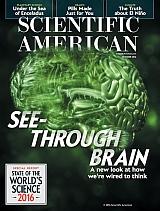

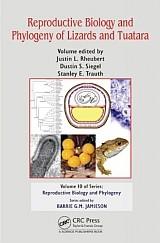

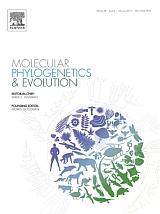

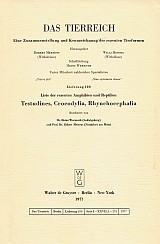

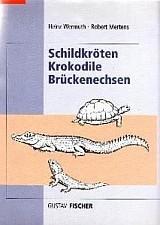











































































































































































|

